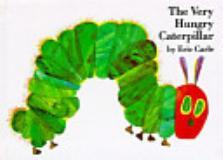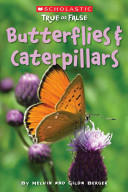Introduction
Reading and writing are among the most important activities at a junior level of education. A learner will always get introduced to the world of literacy at the third-grade stage, and it is always important to ensure that they get attracted to this new world at the earliest stage possible. Fiction has played an important role in making learners at third-grade stage understand some of the important information at that level of education. The world of imagination is important because it allows these learners to develop creativity and the ability to imagine what is beyond normal events (Hale, 2005). Fiction also helps in passing information to the learners at this level of education. This paper focuses on reading and viewing activities for learners at the third-grade stage.
Carle, E. (2011). The Very Hungry Caterpillar. London: Puffin.

The book ‘The Very Hungry Caterpillar‘ is a factious book written by Eric Carle. The book was first published in 1970 by Puffin in London. Penguin Books published its current version in the year 2011. The fiction is about a hungry caterpillar that eats excessively until it becomes a cocoon. The author has successfully used pictures, colours and numeric to bring out the idea to the readers. The book targets readers in the third grade. In this book, the caterpillar let greed take the better part of it. The caterpillar would leave a number of holes on the leaves of various plants. It grew fatter and bigger and later changed into a butterfly with numerous colours.
This tale brings the learner to reality in this world. The learner is made to appreciate the fact that in this world, various forces will always act in a way that will destroy the happiness and joy of people. The tale helps demonstrate that the world is full of struggle against very strong forces that come one’s way. It also emphasizes the need to act with the self-restraint to avoid cases where one is faced with misfortune. The caterpillar eats everything, leaving a trail of destruction. The caterpillar does not appreciate the fact that there is a level beyond which it may not be able to control itself if it goes ahead with the eating. This is what happens when it is forced to change into a cocoon. In this new form, it can no longer eat as much as it used to before. This helps the learner at this early stage to appreciate the fact that the world is about struggling, and that discipline is very important.
This book has brought out some teaching emphases on various fronts. The author has focused on the need to embrace discipline in the lives of learners. This is one of the main reasons why the author chose to bring out the fact that caterpillars never thought of regulating the amount of food it ate. Learners can achieve good results if they are disciplined, and this is what the author is trying to demonstrate in this book. Another point of emphasis in this book is the need to press on despite the challenges that might come along the way. The caterpillars were forced to undergo a very challenging stage of being a cocoons, but they changed into beautiful butterflies after that. This is what the author tries to impart on the learners. The book also emphasizes the need for the learner to act in a way that will develop the society for the benefit of everyone.
Berger, M., & Berger, G. (2008). Butterflies & Caterpillars. New York: Scholastic.

This book was written by Melvin Berger and Gilda Berger in the year 2008. The book was published by Scholastic in New York, the United States. These scholars focus on making learners develop their numeric and logical skills. In this book, the scholars appreciate that learners at third grade lack a clear motivational force as far as a success in life is concerned. In this book, the scholars emphasize that children are better taught with the help of objects. The book has used a series of colours, pictures and other objects to help improve the learner’s ability to understand numeric. The book has also emphasized the importance of improving learners’ logical reasoning at this early stage of learning. This has been ensured by making them understand the logical stages that a butterfly will follow before it can be transformed into a beautiful butterfly. As such, graphics become very important in enhancing the learning process. Bringing fantasy enhances the ability of the learner to be imaginative. This acts as a force that drives learners to understand the basics in the classroom set-up.
The rationale for this text is clearly illustrated in its context. A teacher should be in a position to understand his or her learners. In the third grade, it is very difficult for learners to reason beyond what they can see physically. As a result of this, it becomes very important if the teacher can use pictures and other attractive figures to enhance the learner’s imaginative strength (Croft, 2007). A learner should be made to understand that there is a need to reason beyond what can be seen physically in the immediate environment. In the third grade, learners may lack a clear focus on being an achiever in the classroom. At this stage, emphasis should be on teacher-guided reading. These scholars state that in the third grade, learners always associate learning with the teacher. They will, therefore, fail to work independently without direct guidance from the teacher. This fact is very evident as this scholar demonstrates in the series of questions and answers. At this level, learners are always very playful. They consider learning as a responsibility that is very heavy. They will, therefore, only consider undertaking this responsibility under direct supervision. The book also reflects on the physical environment in the society.
According to scholars, some subjects would require the attention of the whole class. However, some subjects would need the teacher to group learners into small or large groups depending on several factors. This is demonstrated where learners are expected to compare various pictures and respond to true or false questions on every page. This way, the concerned teacher will be in a position to gauge the capacity of learners.
This book has several major teaching emphases. The first emphasis that this book has put is the need to ensure that every teacher understands each learner’s capacity. For the teacher to be able to meet his or her main objective of imparting knowledge on the learners, he or she must know what each learner needs (Annadale, 2005). At the third grade, learners are likely to reason differently, especially due to the difference in their backgrounds and environments from which they come. Generalizing these learners may result in a situation where some of the learners are left back academically. If this happens, the teacher shall have lost the focus of making every learner understand the basic knowledge at this level of education.
Reading Activities
The two books above present a number of learning activities. As a teacher, it is always important to identify specific learning activities and ensure that they are emphasized when undertaking the process of reading (Raman, 2004). It may not be possible to focus on all reading activities at once. It may even be challenging to choose two activities during a single reading process. This is why teachers are always forced to determine the focus of the study concerning reading activities. The table below shows four reading activities which were selected for the two books discussed in part A of this paper.
Reading Activities
References
Annadale, K. (2005). Reading resource book. Salem, Mass: Steps Professional Development.
Bean, R. M. (2009). The reading specialist: Leadership for the classroom, school, and community. New York: Guilford Press.
Berger, M., & Berger, G. (2008). Butterflies & caterpillars. New York: Scholastic.
Carle, E. (2011). The very hungry caterpillar. London: Puffin.
Champion, J. & Kerr, J. (2007). Developing literacy: Using the four roles of the reader. Port Melbourne: Rigby Harcourt Education.
Chin, B. (2002). The reader’s choice: Course 1. New York, New York: McGraw-Hill.
Croft, F. (2007). Reading activities for books or stories: Activities for use in conjunction with novels, picture books, non-fiction reference materials and magazines. Greenwood: Ready-Ed Publishers.
Hale, D. (2005). The Novel: The Novel. Oxford: Blackwell Publishers.
Raman, M. (2004). English language teaching. New Delhi: Atlantic Publishers & Distributors.